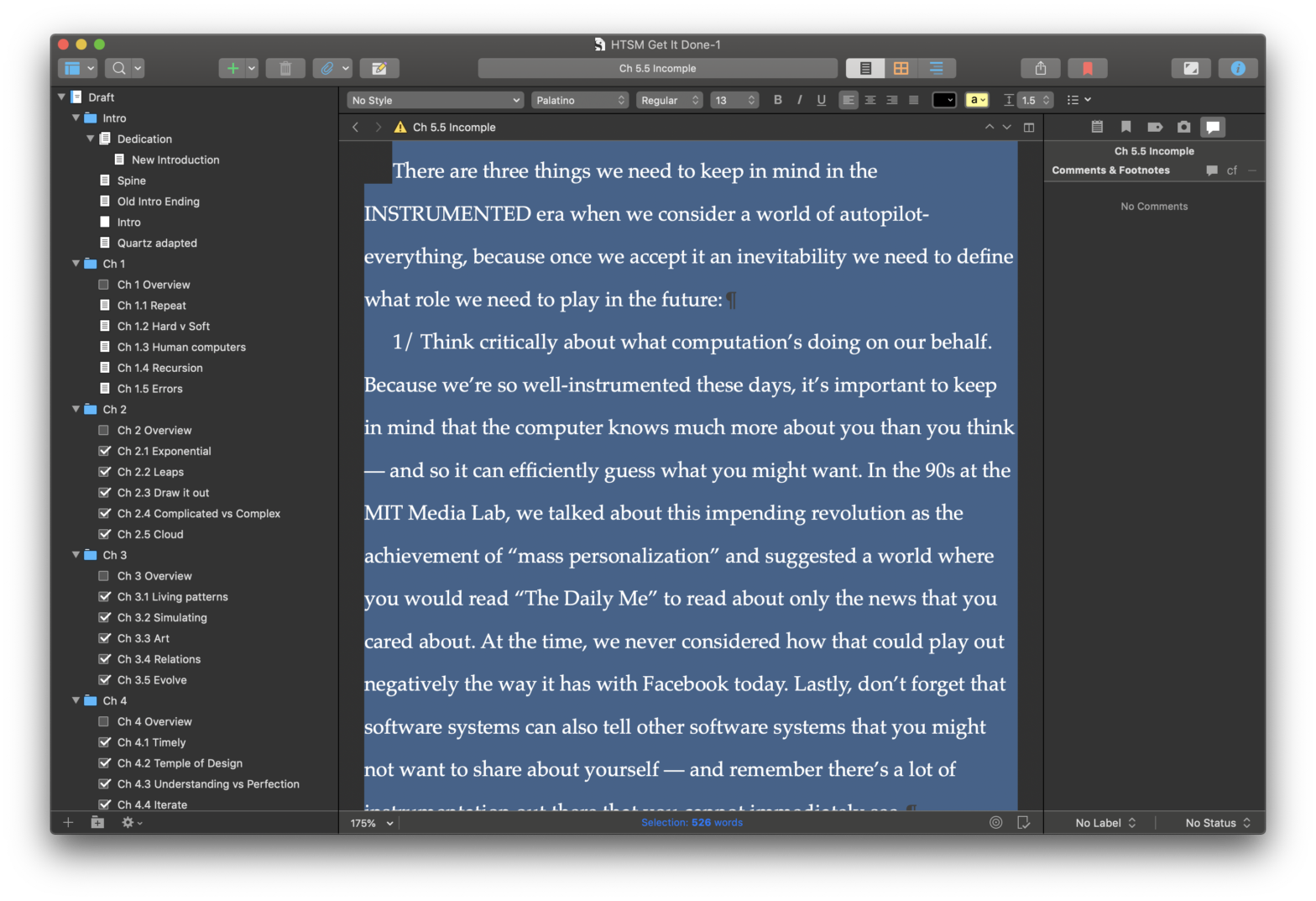“The hunger for quantitative data—trying to turn everything into a measurement before considering what it means—is at the heart of a lot of ethical issues we’re facing in design and technology.”
Erika Hall
This is a piece of text left on the cutting room floor from the Instrumented chapter in How To Speak Machine.
There are three things we need to keep in mind in the “instrumented” era when we consider a world of autopilot-everything, because once we accept it an inevitability we need to define what role we need to play in the future:
- Think critically about what computation’s doing on our behalf. Because we’re so well-instrumented these days, it’s important to keep in mind that the computer knows much more about you than you think — and so it can efficiently guess what you might want. In the 90s at the MIT Media Lab, we talked about this impending revolution as the achievement of “mass personalization” and suggested a world where you would read “The Daily Me” to read about only the news that you cared about. At the time, we never considered how that could play out negatively the way it has with Facebook today. Lastly, don’t forget that software systems can also tell other software systems that you might not want to share about yourself — and remember there’s a lot of instrumentation out there that you cannot immediately see.
- Innovate in ways that computation isn’t really geared to imagine on its own. If you recall how style exists in three different states — in style, out of style, and making style — you want to keep in mind how computation is great at producing an infinite number of variations around a known idea, but it is less good at imagining entirely new ideas. It’s possible to achieve a “local maximum” after constant refinement, and only to discover that there was another idea out there that could have taken you upwards even further called the “global maximum,” or the bigger idea you missed by starting to dig in the wrong place. The process of optimizing is perfectly suited for incremental testing so that an imperfect idea can be honed to perfection using statistics. But consider how luxury brands don’t waste as much time on using data when they create their grand ‘statements’ because they’re “making style.” So for sustaining and optimizing thinking around “in style” it’s terrific, but for making style it will be less good. I say “less good” because the future is still being written as we speak, and there’s enough indication that AI will be able to be more imaginative than we humans might want to hope.
- Always be triangulating so that your intuitions are being fueled by insights from both people and machines. Every expert that I’ve met who uses data in their technology products will always speak to the importance of diversifying your data sources beyond just the quantitative data we can gather today. Digging deep into qualitative data sources that you can only come into contact with through non-electronically-instrumented encounters with other human beings. One’s intuition is not something that is static, but it is constantly changing through one’s exposure to new inputs. This is a practice that’s long been known to be important in the Temple of Design as an important kind of fuel to expand an artist or designer’s way of being through working in different cultures — like Picasso going to Africa or Frank Lloyd Wright living in Japan.


